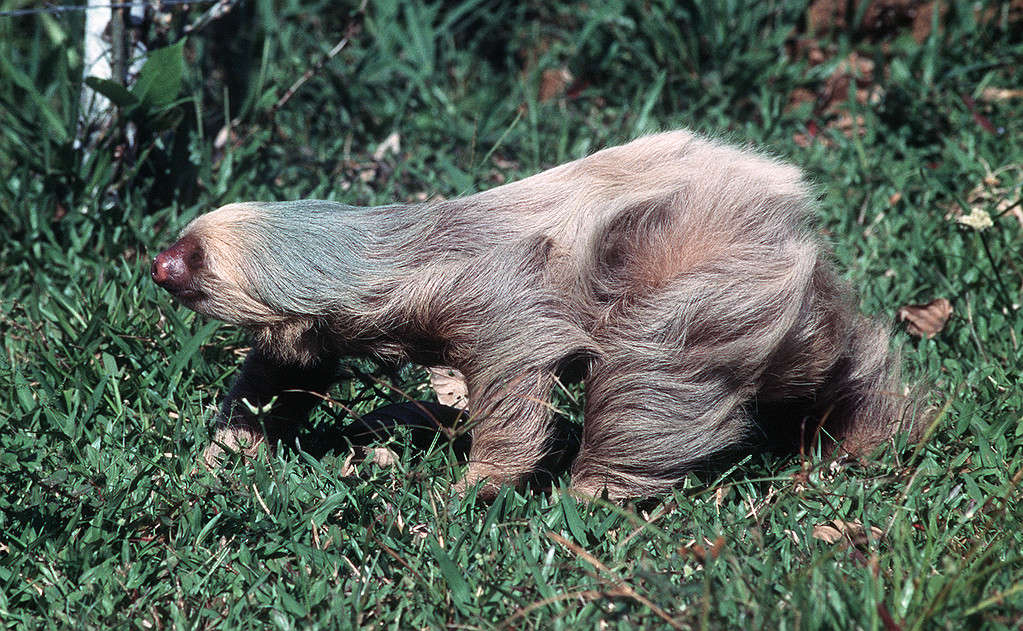How fast are sloths? In a world increasingly concerned with sustainability and energy efficiency, they have a very physically economical lifestyle. They might not be the fastest, but they make it count when they move.
The average speed for a sloth is around 0.15 to 0.5 miles per hour (0.24-0.8 kph). In a dead sprint, a sloth can reach a top speed of 1.5 miles per hour (2.4 kph) to escape predators. Their design, metabolism, and other factors make moving that fast incredibly exhausting, so they rarely do so.
Other Factors and Numbers In Sloth’s Speed
Many sources note their speed as being faster in water than on land. The Sloth Conservation Project reports that they can swim three times faster than they can walk on flat land. However, their optimal mode of transport is upside-down, crawling through the tree tops. They even have special tendons allowing them to fully repose while still clinging to a branch; they can sleep upside-down.
Though they spend most of their lives in trees, they do come down for certain purposes. Their slowest speed appears to be in the ascent back up a tree, in which case they only move six to eight feet every minute. This pace calculates to roughly 0.15 miles per hour (0.24 kph).
The Sloth
A relative of anteaters and armadillos, sloths are in the Xenartha superorder. They live in the jungles of Central and South America. They are two families comprising six species in total. Three toed sloths are a little smaller than two toed.
Body Type, Design and Lifestyle Factors
Within these categories, sloths share many characteristics. And many of these affect their speed and movement.
All sloths have curved claws. These long, curved claws are highly effective for clutching and clambering through trees but don’t work so well walking on flat ground.
They also have less muscle mass than other mammals, about one-quarter of their body weight. Despite this, they’re incredibly strong in their kinetics overall. But that doesn’t do well for speed.
Since they spend so much time hanging upside down, they are constantly working against gravity, which adds to the challenges of moving quickly.
Nutrition and Sloth Speed
All sloths include leaves and vegetation in their diet. Living almost their whole lives in trees, this makes sense.
But this leafy menu offers a overall limited amount of nutrition for them. This is a chief reason for their slower temperament and lifestyle. Two-toed eat leaves, yet they’ll also munch down insects or small lizards if they can. This higher protein diet makes a difference; two toed sloths are larger in general than three toed sloths.
Additionally, their slow metabolism means less energy overall. They can spend weeks or even a month digesting a single meal.
How They Survive Being So Slow
Despite this serious disadvantage of being notably slow, sloths have some significant advantages in survival. Moving slowly actually makes them less noticeable in the treetops to large birds who might prey on them. In certain places, they can even grow algae on their fur, and this helps as a camouflage.
They’re known to have surprisingly long life spans.
At one time, sloths were far less concerned about their speed: ancient remains of enormous Megatherium have been found in the Americas. These beasts were at least ten feet high. At that size, few animals are trying to hunt them.
Additionally, despite their sluggishness, they survive by being surprisingly resilient creatures. Certain families of sloths will recover from wounds or bites remarkably fast and often do not get infections. Despite their slow metabolism, it’s about half of what it would be for other mammals their size, they are remarkably strong. They can lift their whole body weight with one arm; something impossible for humans outside a few acrobats or gymnasts.
Sloth Speed
They can sleep and give birth hanging upside-down thanks to specialized tendons and uniquely arranged organs. The lifestyle might look slow and upside-down, but it’s just the right pace for the sloth and what they want to get done.

